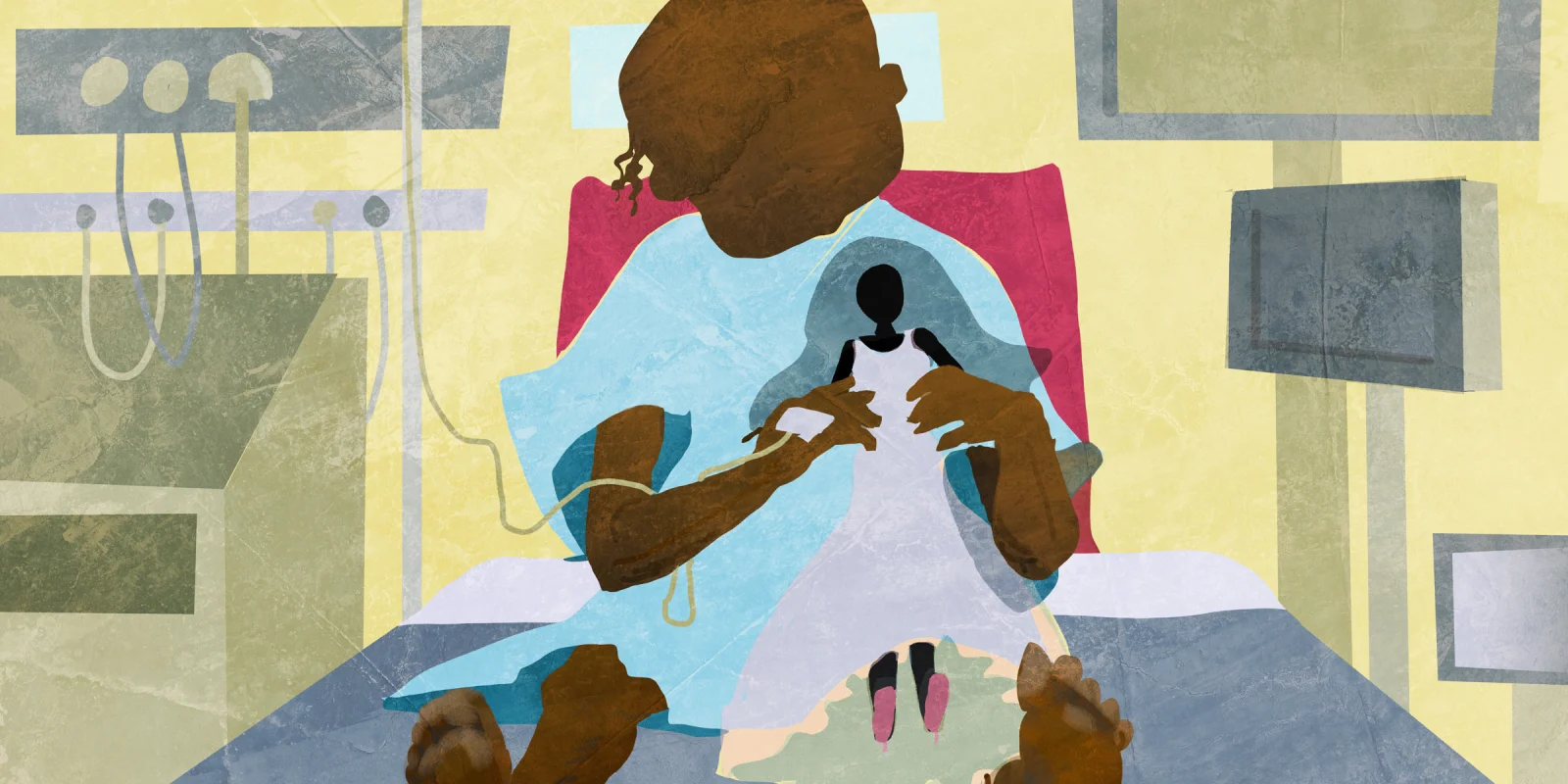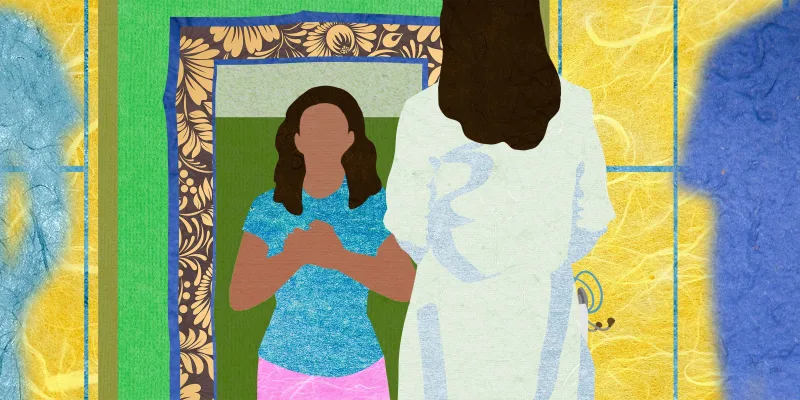Wander into a children’s hospital, and you will likely be greeted by bright purples and blues, animated signs providing directions to the closest cafeteria, and an architectural plan that clearly prioritized sunlight. The inpatient floors are centered around playrooms stuffed to the brim with toys, coloring activities, and books for a sibling to understand their big sister’s leukemia diagnosis. The MRI machine is disguised as a submarine in an underground world, and the patient’s quest is to be both imaged and discover something new. The clinicians, bustling about with their pockets spilling otoscopes and clipboards, usually have a "Finding Nemo" or "Winnie the Pooh" pin clipped to their lanyard, ready to distract a crying child at a moment’s notice. Our Child Life specialists — individuals trained specifically in the emotional and developmental needs of our pediatric patients — are invaluable members of our health care teams. One of our chronic patients, a little boy with a severe autoimmune condition and a love for "Blue’s Clues," had significant staff phobia. Despite the many toxic medications with nearly-intolerable side effects and post-operational physical therapy sessions he had to endure, it was needles that he hated most. His favorite Child Life specialist always made sure that his musical instruments of choice were at his bedside, ready to strum a song as soon as his anti-coagulation medications were due. Our hospitals prioritize creating safe and comfortable environments for our patients as they confront disease and other unknowns. Moreover, we seek to foster curiosity and understanding in a place that has been designed with our pediatric patients as the focus.
One of my favorite aspects of being a pediatrician is the privilege to prioritize our patients’ individuality. Prioritizing their likes, acknowledging their dislikes, and learning how to bring more of who they are into our understanding of them, and moreover, how their disease process affects their life is extremely important to me. In our young patients’ eyes, us knowing their favorite "Paw Patrol" character is just as important as understanding their asthma action plan. The mark of a successful well child visit is measured by the width of a patient’s smile after gifting them a hand-picked sticker. During my developmental and behavioral pediatrics rotation, I had the opportunity to visit a school for children with cerebral palsy. I explored the halls with my fellow co-residents, and learned about the school’s initiatives for this unique group of individuals. Along our whirlwind tour, we met the president of student government, watched a dress rehearsal of "Beauty and the Beast" unfold before our eyes and learned how the teapot’s song would be sung through the use of assisted communicative devices, and enjoyed the liveliness of art class, with green paint smearing everywhere as shirt designs were colored to life. Visiting our patients in their school environment provided us the invaluable chance to glean what is important to these children and their development, and learn how we as their clinicians can work alongside them to achieve their goals.
Common courtesy within inpatient medicine involves checking in with our patients in the afternoon, oftentimes evaluating the effects of the day’s interventions and providing an opportunity to answer any lingering questions. On adult medicine services, these check-ins often consist of conversations explaining mechanisms of action for a particular medication or providing a summary of the hospital course to a family member at bedside. On pediatric services, the culture revolving around these check-ins often involve a heated "Mario Kart" tournament or an animated reading of "The Cat in the Hat." These moments foster a sense of community, which is especially critical for many of our long-term pediatric patients who miss out on valuable time in school, as well as a stronger patient-physician relationship, and are consistent reminders that these patients — despite their rare diseases, complex medical needs, and constant bravery in the face of significant adversity — are just kids. And, most importantly, these kids can see their doctors and nurses as people who care about them and honor their childhood.
A unique skill gained by practicing pediatrics is the ability to meet patients ranging from mere minutes old to 18 years of age right where they are. This skill is attained by a fair share of humbling experiences that children are somehow always quick to offer. During my family medicine rotation, I always looked forward to meeting and caring for my youngest patients. After a morning filled with COPD and osteoarthritis, I called back a 5-year-old for her annual visit, and let her know I would be taking her vitals. As I whisked her off to one of the four clinic rooms, I could hear her quietly ask behind me: “Mommy, what are vitals?” and then louder, “Doctor, what are vitals? You didn’t tell me.” Her inquiry taught me that knowledge regarding even the most elemental aspect of medicine isn’t to be assumed. Interactions with my young patients always remind me of the importance of tailoring our education to our patients’ varying levels of understanding. Moreover, pediatricians often use a wide variety of educational tools — such as books, music, and diagrams — to explain complex medical diagnoses to children, but we oftentimes do not provide the same resources, time, or grace to our adult patients.
While I might be slightly biased, there are many lessons to be learned from the field of pediatrics. The commitment to comfortable environments, to highly-individualized care, to patient-centered education, and to appreciation for who our patients are as people only seeks to enhance the care we provide. Importantly, we as clinicians typically accept, understand, and excuse a level of bluntness — oftentimes stemming from stress and anxiety — from our pediatric patients that we typically do not excuse as readily from our adult patients. This phenomena is likely fueled by similar patterns seen within our society. However, we must recognize that being hospitalized — hearing scary diagnoses and facing uncertain prognoses in an unfamiliar environment — may bring out the fearful child in all of us, including in our adult patients. All of our patients, young and old, deserve to have clinicians that fully embody this knowledge, and medical care tailored to provide the best possible experience amid many unknowns.
What other lessons can pediatrics teach the rest of medicine? Share in the comments.
Dr. Sahr Yazdani is a pediatric resident physician in Philadelphia, Pennsylvania. She enjoys reading, listening to Pakistani music, and trying out new Thai restaurants with her friends and family! Dr. Yazdani is a 2022–2023 Doximity Op-Med Fellow.
Illustration by Jennifer Bogartz







